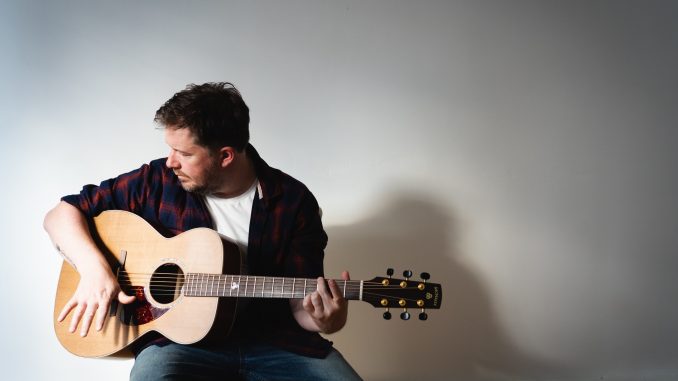
Here’s the new single from singer-songwriter Séamus Foley, whose characterful, world-weary delivery and heartfelt lyrics are immediately engaging. ‘Letters to Victoria’ is a timeless song, an example of classic songwriting and Foley’s precise craft. As the song grows, it benefits from the textured interplay of acoustic and electric guitars and the gorgeous pedal steel of the 2-time AMAUK instrumentalist of the year CJ Hillman, whose haunting notes slip, bend and sway into the ether. There’s a moment halfway through when all the instrumentation is paused before everything kicks back in and the music is truly lifted by Hillman’s sweeping steel. Throughout the song, there’s a sense of resignation: “If I can make it through this year, I’m punching lucky // Sometimes looking forward is a curse // But it only runs one way, there’s no escaping // Living for the past just makes it worse,” but by the end, a touch of hope is also there.
Foley describes the musical blend of his songs: “I grew up listening to a wide variety of music and I have never been drawn towards being a purist of any particular genre. It’s folk, rock n’ roll, country, pop, blues and more but none of those things in their original form. Being able to mix and change styles has always been part of who I am as a songwriter.” Born into an Anglo-Irish family in Manchester, Foley was always around music and remembers fondly the family gatherings when people would sing and share songs together. Americana influences have been there all along but his sound is very much his own.
The single is taken from Foley’s brand new 6-track EP ‘Into the Night’, which is out now. Find out more here. Foley describes the new material and the writing and and recording processes: “I had a very clear idea of how I wanted these songs to sound and Miles and all the musicians involved helped to make that idea a reality. This EP was born out of the frustration of lockdown and a lack of creative outlet. Which means some of it was recorded remotely using people’s home gear, and some of it was made in recording studios. The results, I think, speak to the expertise and professionalism of those involved. I am really happy both with how we made this EP, and how it has turned out. These songs are quite similar in many ways: Guitar-driven, always trying to convey a particular emotion or situation, usually something slightly desperate. There’s an urgency to some and a slow kind of sadness to others, but I’ve always felt those seemingly opposite sensibilities fit together quite snugly. All the songs on this recording deal with struggle in some form, whether complex feelings of loss or longing or more simple affairs like the call of the road or having writer’s block. I’ve always been amazed when a song I hear manages to articulate something that I’ve been feeling, and that’s a piece of magic that I’d love to be able to embed in my work: to capture a feeling that people can relate to.”
‘Into the Night’ really is a product of these pandemic-times as, like so many musicians, Foley had to change his approach. He explains: “I’ve been recording using a mixture of live and remote techniques. The process has opened my eyes to the ease, if you have the right musicians, of getting sessions done remotely. The lockdown has done me a favour in that sense – I’ve learned the value of doing things differently.” Doing things differently has certainly worked here – this is thoughtful music, expertly played. Enjoy.
For more info’ about Séamus Foley’s music, see the exclusive Q&A below.
Exclusive Q&A with Séamus Foley
Did anything in particular inspire you when writing Letters To Victoria?
Although this song is not autobiographical, I was trying to say something universal,
which I think the chorus achieves. The idea of time healing wounds is something we all
experience to some extent I think.
Was there anything different about recording this song?
Almost everything in fact. I recorded the guitar and bass at home, I also ended up
playing the drums on this song, which I’ve never done on my recordings before. The
keys and pedal steel were recorded remotely, which is something we did a lot on this
record, and the electric guitars and vocals were done in the studio. It also features a
solo with both electric guitar and pedal steel, which is a dream come true.
What does your songwriting process look like?
It varies, from song to song, but usually the music comes first, chords and a rhythm or
fingerstyle pattern, then the vocal melody and finally the words.
Who would you most like to collaborate with?
There’s a long list, but at the top of that list is Brandi Carlile.
Finally, can you tell us what’s next?
I’d love to make a new album with a full band. I’m starting to get some material together
now so that’s the plan.


